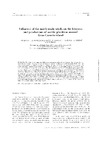Please use this identifier to cite or link to this item:
https://accedacris.ulpgc.es/handle/10553/1558
| DC Field | Value | Language |
|---|---|---|
| dc.contributor.author | Aristegui, J. | en_US |
| dc.contributor.author | Hernández-León, Santiago | en_US |
| dc.contributor.author | Gómez, May | en_US |
| dc.contributor.author | Medina Falcón, Lidia | en_US |
| dc.contributor.author | Ojeda, O. | en_US |
| dc.contributor.author | Torres, S. | en_US |
| dc.contributor.other | Facultad de Ciencias del Mar | - |
| dc.contributor.other | Departamento de Biología | - |
| dc.date.accessioned | 2009-10-08T02:31:00Z | - |
| dc.date.accessioned | 2018-03-07T08:58:22Z | - |
| dc.date.available | 2018-03-07T08:58:22Z | - |
| dc.date.issued | 1989 | en_US |
| dc.identifier.issn | 0214-8358 | en_US |
| dc.identifier.other | 868 | - |
| dc.identifier.uri | https://accedacris.ulpgc.es/handle/10553/1558 | - |
| dc.description.abstract | The effect of the wind shear field on the southwest border of Gran Canaria Island (Canary Islands) causes the development of a marine front that fluctuates under the influence of the North Trade Winds. This front separates two areas on the island shelf: one of turbulence and one of calm, the latter in a wake of warm water to the south of the island. Monthly studies of biomass and production in phyto- and zooplankton and activity of the meiofauna have been done during the winter and spring of 1986-87, respectively, mainly from two stations approximately 50 m deep, one in each of the above-mentioned areas. Values of nutrients, primary production and mesozooplankton biomass and activity were higher than those provided by other authors for oceanic waters of the archipelago. Nonetheless, significative differences were found on both sides of the front. In the area of turbulence, phytoplankton was less abundant but more active, coinciding with higher concentrations of nitrate, as compared with the area of calm. Low values of cell numbers found in both areas may be explained by the grazing pressure of relatively large patches of mesozooplankton found towards the wind shear field, and also by physical processes causing dispersion at the more exposed station. Unlike the ocean, where the productive season is restricted to the late winter or early spring, in coastal waters planktonic production may be rather high troughout most of the year due to the action of the North Trade Winds, which continuously mix the surface waters. | en_US |
| dc.language | eng | en_US |
| dc.relation | 82/22.04.85 (Gobierno de Canarias) | en_US |
| dc.relation.ispartof | Scientia Marina | en_US |
| dc.source | Scientia Marina [ISSN 0214-8358], v. 53 (2-3), p. 223-229 | en_US |
| dc.subject.other | Neritic plankton | en_US |
| dc.subject.other | Trade winds | en_US |
| dc.subject.other | Marine fronts | en_US |
| dc.subject.other | Atlantic Ocean | en_US |
| dc.title | Influence of the north trade winds on the biomass and production of neritic plankton around Gran Canaria island | en_US |
| dc.type | info:eu-repo/semantics/article | en_US |
| dc.type | Article | en_US |
| dc.contributor.contentdm | Biología | es |
| dc.contributor.contentdm | Facultad de Ciencias del Mar | es |
| dc.identifier.absysnet | 230538 | - |
| dc.identifier.crisid | 2728;1255;1492;-;-;- | - |
| dc.investigacion | Ciencias | en_US |
| dc.project.reference | 82/22.04.85 | - |
| dc.rights.accessrights | info:eu-repo/semantics/openAccess | es |
| dc.type2 | Artículo | en_US |
| dc.utils.revision | Sí | en_US |
| dc.contributor.wosstandard | Biología | - |
| dc.contributor.wosstandard | Facultad de Ciencias del Mar | - |
| dc.contributor.wosstandard | Biología | - |
| dc.contributor.wosstandard | Facultad de Ciencias del Mar | - |
| dc.contributor.wosstandard | Biología | - |
| dc.contributor.wosstandard | Facultad de Ciencias del Mar | - |
| dc.contributor.wosstandard | Biología | - |
| dc.contributor.wosstandard | Facultad de Ciencias del Mar | - |
| dc.identifier.supplement | 2728;1255;1492;-;-;- | - |
| dc.identifier.supplement | 2728;1255;1492;-;-;- | - |
| dc.identifier.supplement | 2728;1255;1492;-;-;- | - |
| dc.identifier.supplement | 2728;1255;1492;-;-;- | - |
| dc.identifier.ulpgc | Sí | en_US |
| dc.contributor.buulpgc | BU-BAS | en_US |
| dc.description.scie | SCIE | |
| item.grantfulltext | open | - |
| item.fulltext | Con texto completo | - |
| crisitem.author.dept | GIR IOCAG: Oceanografía Biológica y Algología Aplicada | - |
| crisitem.author.dept | IU de Oceanografía y Cambio Global | - |
| crisitem.author.dept | Departamento de Biología | - |
| crisitem.author.dept | GIR IOCAG: Oceanografía Biológica y Cambio Global | - |
| crisitem.author.dept | IU de Oceanografía y Cambio Global | - |
| crisitem.author.dept | Departamento de Biología | - |
| crisitem.author.dept | GIR ECOAQUA: Ecofisiología de Organismos Marinos | - |
| crisitem.author.dept | IU de Investigación en Acuicultura Sostenible y Ec | - |
| crisitem.author.dept | Departamento de Biología | - |
| crisitem.author.dept | Departamento de Biología | - |
| crisitem.author.orcid | 0000-0002-7526-7741 | - |
| crisitem.author.orcid | 0000-0002-3085-4969 | - |
| crisitem.author.orcid | 0000-0002-7396-6493 | - |
| crisitem.author.parentorg | IU de Oceanografía y Cambio Global | - |
| crisitem.author.parentorg | IU de Oceanografía y Cambio Global | - |
| crisitem.author.parentorg | IU de Investigación en Acuicultura Sostenible y Ec | - |
| crisitem.author.fullName | Arístegui Ruiz, Javier | - |
| crisitem.author.fullName | Hernández León, Santiago Manuel | - |
| crisitem.author.fullName | Gómez Cabrera, María Milagrosa | - |
| crisitem.author.fullName | Medina Falcón, Lidia | - |
| crisitem.author.fullName | Torres Torres, Claudia | - |
| Appears in Collections: | Artículos | |
Page view(s)
153
checked on Dec 28, 2024
Download(s)
138
checked on Dec 28, 2024
Google ScholarTM
Check
Share
Export metadata
Items in accedaCRIS are protected by copyright, with all rights reserved, unless otherwise indicated.
